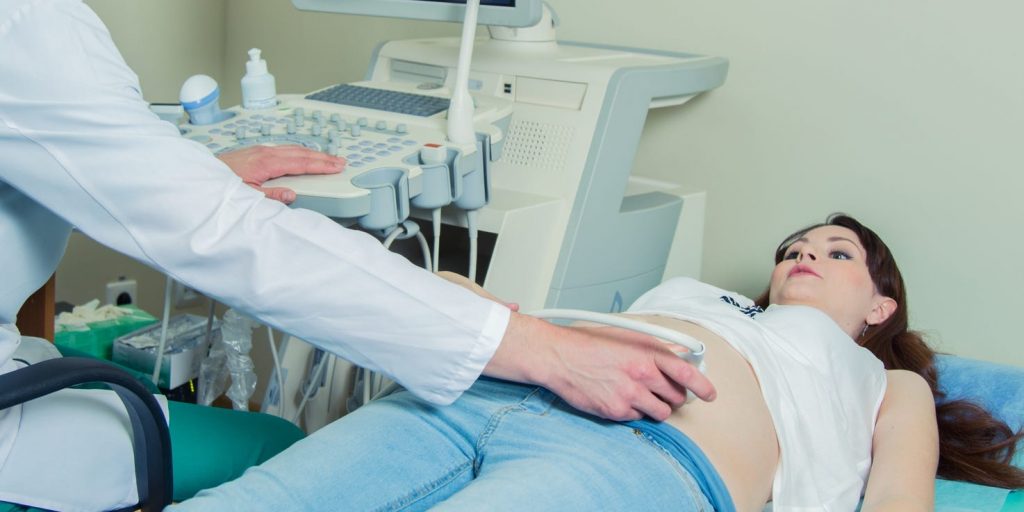
- Uterine fibroids cause symptoms like painful periods, pelvic pain, and uncomfortable intercourse.
- You may be more at risk of fibroids if you have a family history of the condition or are obese.
- Fibroids can be treated with medications, uterine artery embolization, or other medical procedures.
- Visit Insider's Health Reference library for more advice.
Uterine fibroids, also called leiomyomas, are benign tumors that grow in or on the uterus. About 20% to 80% of people with uteruses develop fibroids before the age of 50.
Fibroids may grow into the uterine cavity, within the wall of the uterus, or outside the uterus, and they can cause painful symptoms.
Here's what you should know about the signs, risk factors, and treatment options of uterine fibroids.
Symptoms of uterine fibroids
Symptoms of uterine fibroids typically vary depending on their location, size, and number. Here are some of the most common signs:
- Constipation or abnormal bowel movements
- Pelvic pressure or pain
- Backache or leg pains
- Heavy menstrual bleeding
- Menstrual period lasting more than seven days
- Menstrual pain
- Pain during intercourse
- Frequent urination
- Urinary retention, or being unable to empty the bladder completely
However, at least 50% of uterine fibroids are asymptomatic.
"It is entirely possible that a person would never know they had uterine fibroids, unless they were large enough to detect on a physical exam or if an ultrasound was performed," says Meenal Misal, MD, a physician in obstetrics and gynecology at The Ohio State University Wexner Medical Center.
Risk factors of uterine fibroids
Uterine fibroids develop from a smooth muscle stem cell in the uterus, which divides repeatedly until a mass — aka a fibroid — is created, says Misal.
Although the exact cause is unknown, several factors may increase its risk, which include:
- Race: African American women have a threefold higher risk of developing uterine fibroids and may have a more severe case. The reason for this is unclear, and more studies are needed to understand the correlation between race and this condition.
- Family history: Your risk increases if you have a family member who was diagnosed with uterine fibroids. Having a mother with uterine fibroids makes your risk three times higher than average.
- Diet: "Vitamin D deficiency and a diet rich in red meat and alcohol is also associated with increased risk of fibroids," says Misal. Further research is needed to understand how they contribute to fibroid risk, but it's possible that improving your diet may reduce blood pressure and have a protective effect on fibroid growth.
- Age: If you are of menstruating age — around 11 to 51 — you are at a higher risk for fibroids. The hormones estrogen and progesterone stimulate the uterus every month to prepare for possible fertilization, which may promote the growth of fibroids. Uterine fibroids don't usually develop before puberty or after menopause.
- Weight: Being overweight or obese increases your risk of developing uterine fibroids.
There is no known way to prevent uterine fibroids from developing, says Terri McEndree, MD, FACOG, an OB-GYN physician at AdventHealth. However, weight management and a balanced diet may reduce the risk.
How are uterine fibroids diagnosed?
Fibroids may be detected during routine pelvic or gynecologic exams with your primary care provider.
They can recommend imaging tests such as magnetic resonance imaging (MRI) or computed tomography (CT) scan to determine the number, size, and location of any fibroids and give you a diagnosis.
"Ultrasound is the most widely used as it is inexpensive, and no radiation exposure or contrast is required. MRI is the most specific test, and I reserve this for certain procedure preparation or if we cannot clearly understand the pathology by other means," says McEndree.
Treatment for uterine fibroids
Not all fibroids have to be removed. There are many treatment options and each patient is considered individually, says McEndree. Sometimes, watchful waiting is recommended to monitor the fibroid first.
Health care providers may suggest removing the fibroid, depriving it of hormonal stimulation, or treating only symptoms if the fibroid doesn't require a medical procedure.
Here are the common treatment options for uterine fibroids:
- To shrink the size of fibroids with medications: Medications like gonadotropin-releasing hormone agonists can suppress the production of estrogen and progesterone, decreasing the size of uterine fibroids, says Misal.
- To shrink the size of fibroids with a medical procedure: A minimally invasive procedure called uterine artery embolization blocks blood flow to the uterus temporarily, which can shrink fibroids and cause them to die.
- To treat the fibroid while preserving the uterus: Procedures like MRI-guided focused ultrasound surgery, myomectomy, or radiofrequency ablation destroy or remove fibroids without affecting uterine tissue.
- To permanently treat uterine fibroids: The only permanent way to treat uterine fibroids is through a hysterectomy, the surgical removal of the uterus.
If removing the fibroids is not medically necessary but you are dealing with mild menstrual symptoms like heavy flow or dysmenorrhea, you can still treat the symptoms with medications. Tranexamic acid and hormonal birth control can reduce bleeding, says McEndree. You may also be recommended to take iron supplements to avoid anemia.
Any surgical procedure comes with the risk that fibroids may grow again and cause symptoms, except for hysterectomy.
Insider's takeaway
If you experience heavy bleeding, abnormal bowel movements, and frequent urination, you may have a uterine fibroid.
It's important to get checked by a healthcare professional for a diagnosis and potential treatment.
There is no single best treatment for uterine fibroids and it's different from one individual to another.
Surgically removing the uterus is the only permanent way to treat uterine fibroids.
